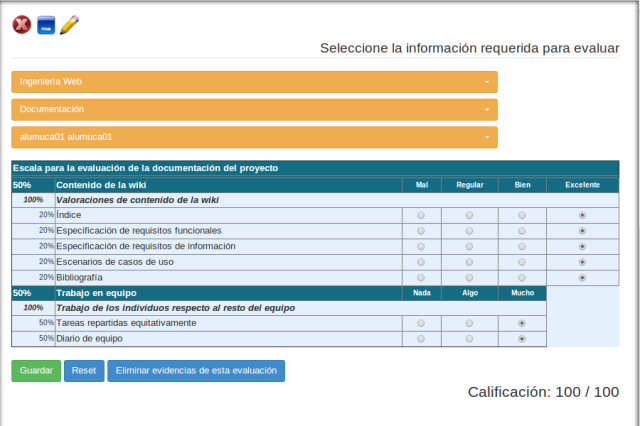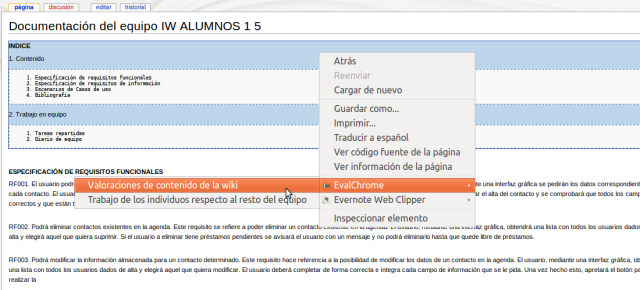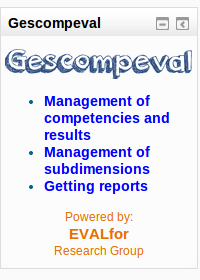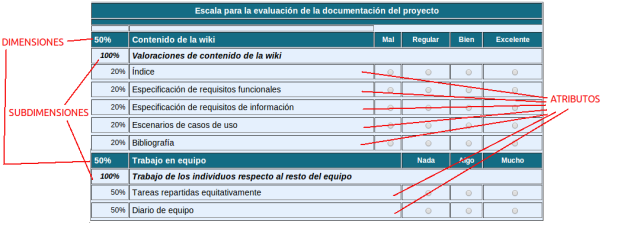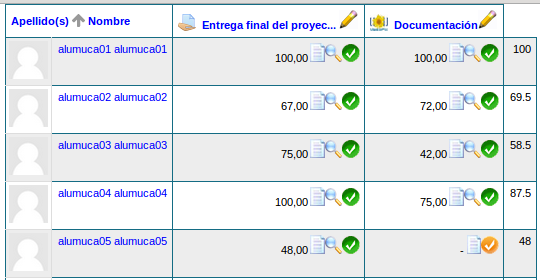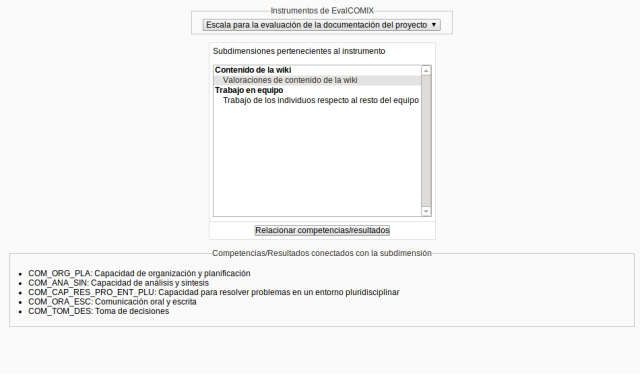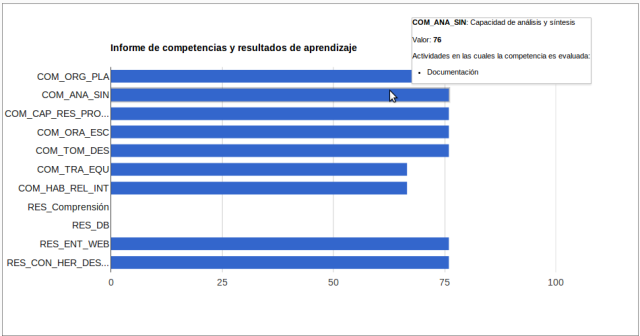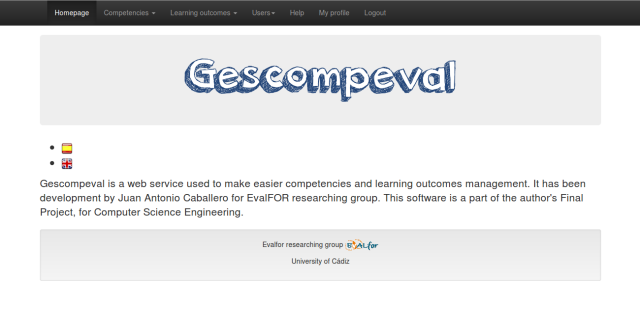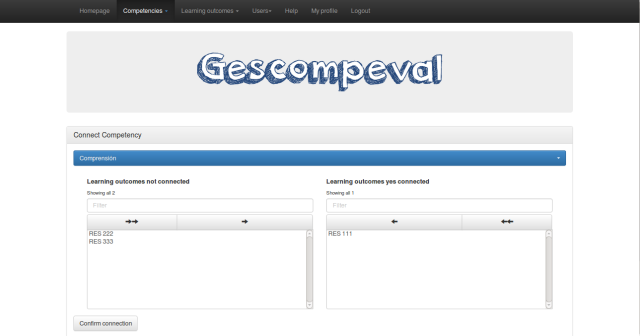Introduction
Well, at last I decided to create a blog to write about my current project: Inteweb-Gescompeval (integration of Web services to make the e-assessment easier and manage the competence of the students). This is my final year project of Engineering in Computer Sciences and it is participating in the CUSL competition.
In this blog I am going to explain what the development is like, difficulties found and choices made. However, in this first post I will only explain what involves the project and the software architecture used.
This project has three main objetives:
- Developing a Rest Web service for managing competencies and learning outcomes.
- Developing a plug-in for Moodle 2.X which will allow to create some kind of reports about competencies and learning outcomes got by students according to their assessments in the activities of a course.
- Developing a client for making the assessment of module activities connected to a Web service easier, like Mediawiki or WordPress.
Below a brief explanation of each objetive and how I am going to develop it.
Gescompeval
Gescompeval will be a Rest Web service for managing competencies and learning outcomes but the API will only offer resources, not post them. So, for CRUD operations an interface is needed and it will be developed too.
The idea is with Gescompeval, administrators and teachers with capabilites could create a competencies and learning outcomes index. Once they had been created, connect competencies with learning outcomes (and vice versa) is possible too.
The first (maybe will be more in the future) API resources are:
- Get competencies.
- Get learning outcomes.
- Get learning outcomes connected with a competency.
- Get competencies connected with a learning outcome.
Gescompeval_MD
Once an index of competencies and learning outcomes is created with Gescompeval, an application for using that index will be necessary. This application will be a block plug-in for Moodle 2.X called Gescompeval_MD and it will allow to create reports which will cointain information about the grade of the students of a Moodle course.
For knowing which mark has each student in a competency/outcome come into play another Web service and another Moodle block plug-in: EvalCOMIX and EvalCOMIX_MD [1], respectively.
EvalCOMIX is a Web Service for e-Assessment integrated into Learning Management Systems (LMS). EvalCOMIX enables you to perform two types of activities. First, the design and management of assessment tools like Rating scale, Checklists, Rubrics, etc. Secondly, integrated within an e-learning environment (Moodle, LAMS, …), it allows the tools to be used at the time of undertaking the assessment. This integration is called EvalCOMIX_MD.
The EvalCOMIX tools are divided in dimensions, subdimensions and attributes. Each subdimension will be connected with a competency or a learning outcome from Gescompeval_MD. Getting the students’ grades in those subdimensions, reports will be able to be showed.
New client of EvalCOMIX
With the use of the ASCETA modules activities [2], it is possible to create activities in Moodle connected with Web services like Mediawiki or WordPress, and with EvalCOMIX it is possible to assess them like another activity. However, this assessment will always be inside Moodle. So, the last objective of the project is to make this assessment easier, allowing to make it inside the relationated Web service.
For example, if a teacher wants to assess a student’s Mediawiki page, with this extension (called new client of EvalCOMIX temporally) he will be able to open an EvalCOMIX client from the browser which allows him to mark the attributes that must be assessed according to the current Mediawiki page. Besides, he will be able to add some evidence of the assessment selecting text of the Web page (in this case a Mediawiki page).
Architecture
A schema about the software architecture is displayed below. As example of ASCETA module activities, Mediawiki is included in the graphic but is isn’t connected with the new client of EvalCOMIX because it is decoupled from Mediawiki, it works for any Web page.
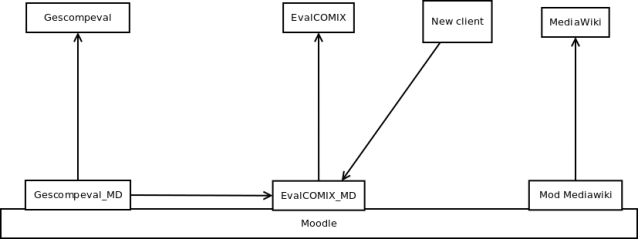
Gescompeval_MD is related with Gescompeval (obviously) and with EvalCOMIX_MD for getting the students’ information and the structure of the tools from EvalCOMIX.
Otherwise, the new client of EvalCOMIX must be connected with EvalCOMIX_MD to get information from EvalCOMIX and to save the made assessment.
It is important to emphasise that every module or plug-in that has to be development, it will be as decoupled as been possible.
Conclusion
I have explained the project briefly, the aspects it includes and the main objectives. In following posts I will comment more on technical details and problems that have appeared as I make progress in the project.
References
[1] http://evalcomix.uca.es
[2] http://asceta.uca.es


